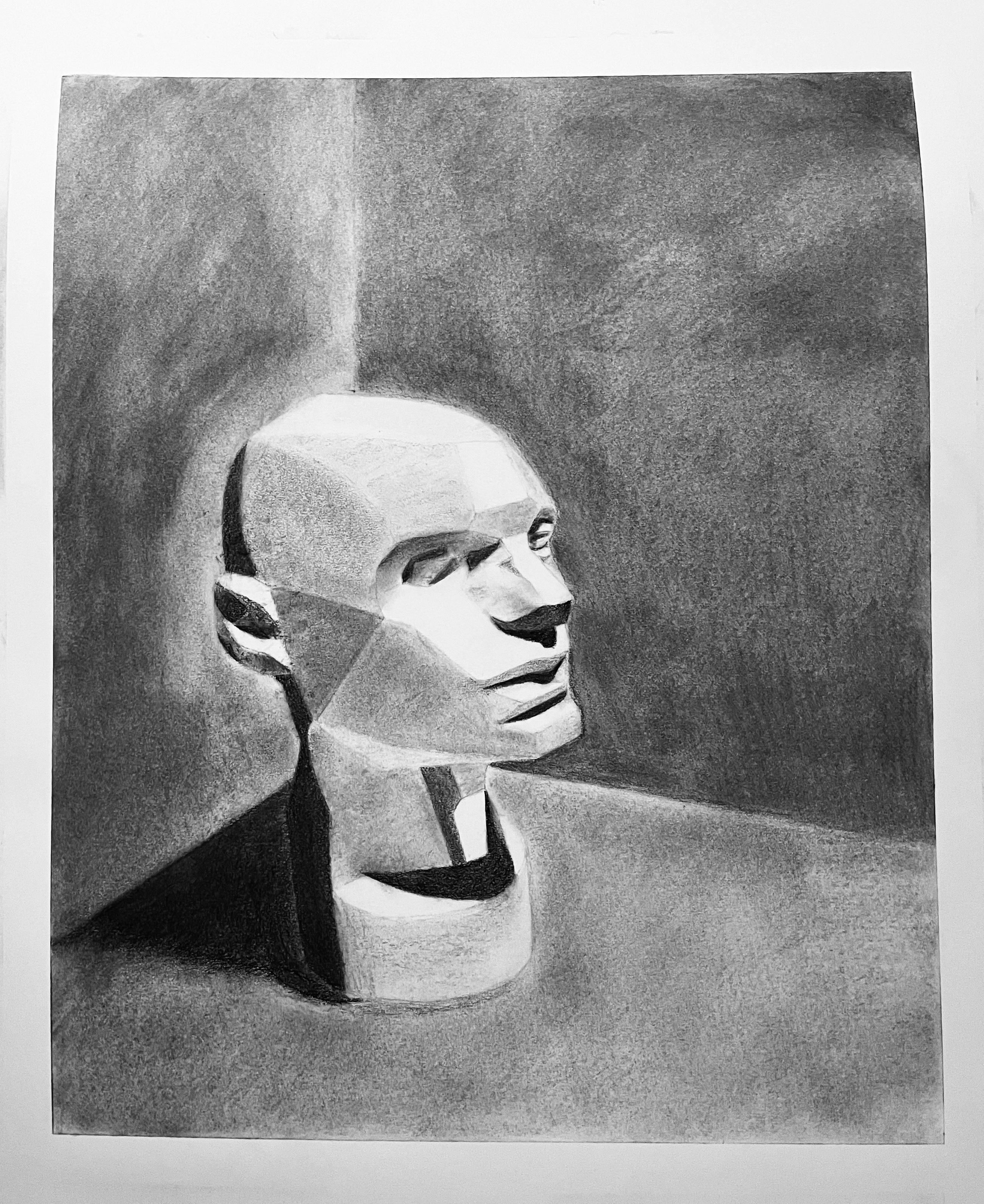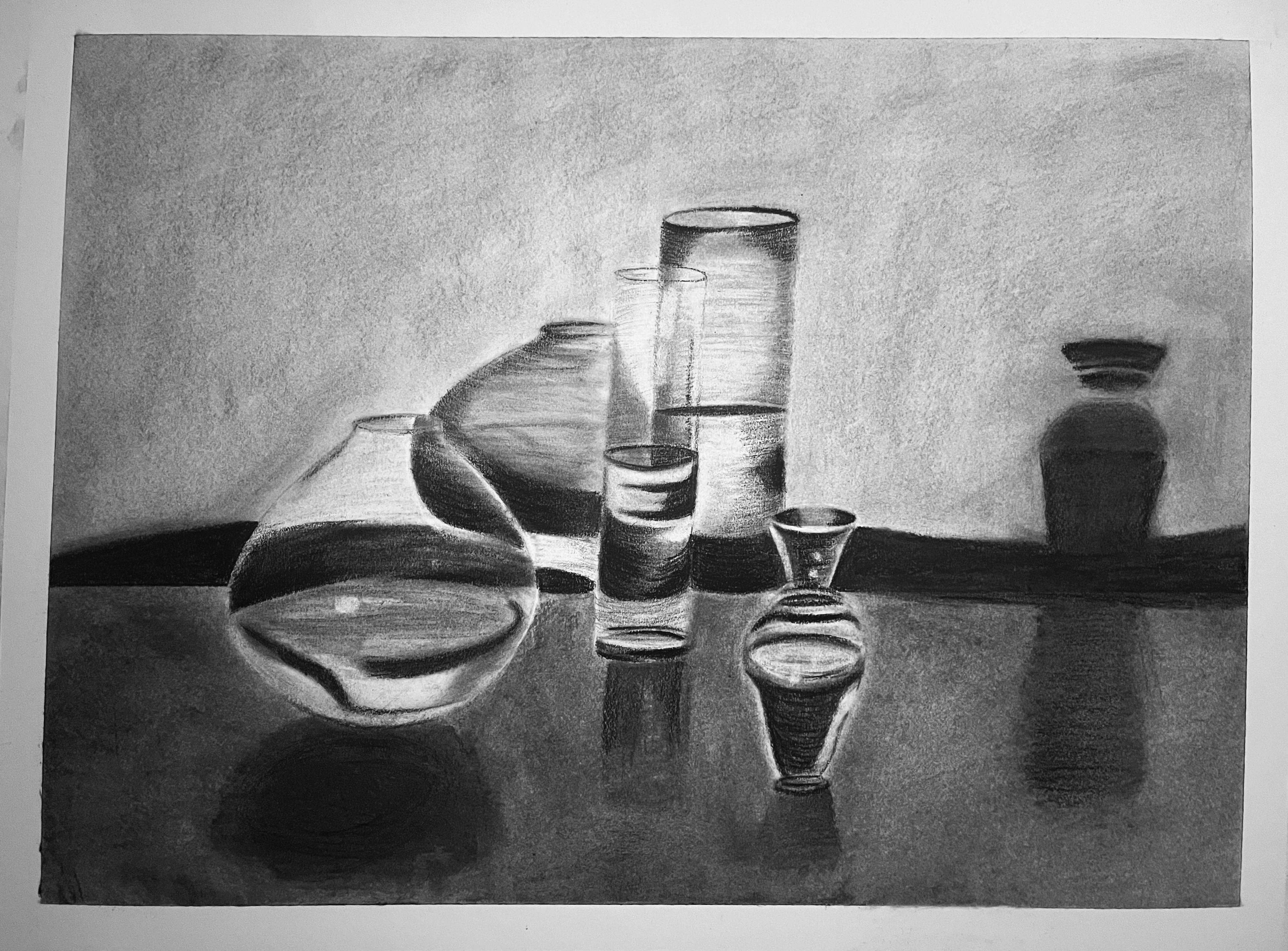
Project overview
We’ll design a readable value map (sky, ground, focal masses), then layer textures for trees, rocks, and water. The secret is edge control and simplifying distant shapes for depth.
Tools & papers
- Vine charcoal (layout) + compressed charcoal (accents)
- Charcoal pencils (HB–4B)
- Blending stumps / soft brush / tissue
- Kneaded & vinyl erasers (lift & clean edges)
- Paper: smooth drawing paper or toned paper (medium tooth)
- Fixative (light, workable)
Setup & planning
- Pick a 3–4 value design (e.g., light sky, mid ground, dark trees).
- Decide the focal area and keep the highest contrast there.
- Keep distant shapes simpler; reserve texture for the foreground.
Step-by-step
Thumbnail values
Make 2–3 tiny value sketches to test compositions. Lock in a simple value plan before the big drawing.
Block-in big shapes
With vine charcoal, place the horizon, major landmasses, and tree groups. Keep lines light and adjustable.
Group values
Mass in the sky, ground, and focal shapes with flat tones. Think posterized—avoid early detail.
Atmospheric perspective
Soften edges and lighten values in the distance. Push contrast and texture only as forms come forward.
Texture passes
Use broken marks and negative erasing for foliage. A soft brush makes silky water; stumps refine rock planes.
Focal accents
Reserve your darkest darks and sharpest edges near the focal point. Everywhere else stays quieter.
Unify & fix
Glaze a light tone to unify an area, restate lost accents, then mist a light fixative to finish.
Tips
- Design first, details later—check your value plan often.
- Keep one stump for light areas and another for darks.
- Use the kneaded eraser like a brush to paint back light.
Troubleshooting
- Flat depth: Distant shapes are too dark/contrasty—lighten and soften edges.
- Busy texture: Too much detail everywhere—simplify mid/background masses.
- Weak focal point: Increase contrast and edge sharpness only at the focal area.
